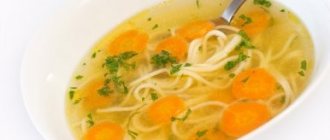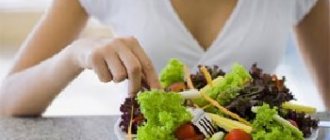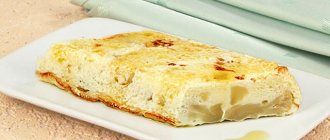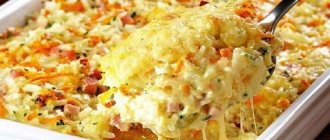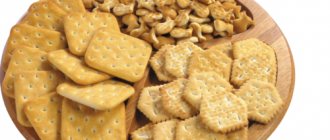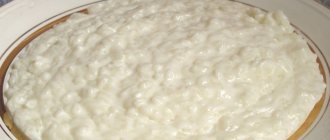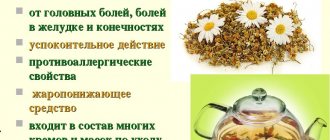The ban on eating meat for pancreatitis and other diseases of the gastrointestinal tract is a big misconception. When choosing a dish, it is not its composition that matters most, but the method of preparation, which is why meat in the form of a soufflé is welcomed by doctors and nutritionists.
A soufflé made from chicken or other types of meat can hardly be called a traditional dish - few people would want to eat a strange-looking treat that is more suitable for baby feeding. However, with pancreatitis, as well as during the recovery period after surgery, it is the soufflé that is considered a kind of lifesaver for patients. It is worth remembering that the basis of a dietary souffle is not just the ground state of the product, which allows the body to quickly and easily absorb it, but also the absence of any additives, especially spices.
The benefits of soufflé
This dish is a pureed mass of meat, chicken, fish, zucchini, cottage cheese and other products with egg whites. Sometimes they make rice soufflé; this dish can often be found on hospital menus. The benefit of soufflé is that it chops the meat and eliminates the need to fry the original ingredients. Thus, the patient receives a dish that, by all standards, corresponds to the basics of a healthy diet.
The ingredients that make up the soufflé have beneficial properties, animal proteins and a number of trace elements and minerals. If the patient does not currently have an exacerbation of the disease, then he can add some herbs, making the composition of the souffle even richer in the presence of vitamins.
The soufflé is also easy to prepare, has excellent taste, so it is ideal not only for patients with gastrointestinal tract diagnoses, but also for people watching their diet and lifestyle.
Permitted and prohibited products
To reduce the production of pancreatic juice and reduce the load on the inflamed gland, the following must be completely excluded from the patient’s diet:
Menu for chronic pancreatitis
- Soups cooked in rich meat, fish and mushroom broths, as well as complex soups - cabbage soup, pickles, borscht. Cold and dairy products are excluded.
- Bread – today’s baked goods made from wheat/rye flour, puff pastry and pastries, pies fried in oil, flatbreads.
- Fatty meat - pork, lamb, duck, goose - sausages, offal, canned food and smoked meats.
- Fish. Fatty varieties, smoked and salted are prohibited.
- Milk and lactic acid products with high fat content.
- Cereals – millet, pearl barley, wheat, corn.
- Fried and hard-boiled eggs.
- Vegetables - turnips, radishes, garlic, peppers, eggplants, cabbage, spinach.
- Sweets - jam, ice cream, fresh dates, grapes, bananas, figs.
- Spicy seasonings.
- Coffee, strong brewed tea, coffee, soda, grape juice.
- Refractory fats - pork, beef, lamb.
Allowed and prohibited foods for pancreatitis
When developing a menu for every day, it is necessary to take into account the recommendations of nutritionists and use only approved products. This:
- dried loaf, biscuits, homemade crackers;
- vegetarian soups with the addition of pureed vegetables - potatoes, zucchini, pumpkin, carrots - vermicelli, semolina or oatmeal;
- lean meats - chicken, rabbit, turkey - in the form of steam cutlets, soufflé, quenelle, beef stroganoff;
- low-fat fish varieties - pollock, carp, cod;
- cereals - oatmeal, semolina, rice - are used for preparing porridges, casseroles, puddings;
- low-fat milk and lactic acid products;
- steam omelette without yolks;
- vegetables - potatoes, zucchini, beets, pumpkin, cauliflower, carrots, green peas;
- sweet berries and fruits in the form of mousses, jellies, puddings, oven-baked apples;
- sauces - milk and prepared with vegetable broth (when using flour, the latter is not sautéed);
- butter and vegetable oil;
- weak tea with lemon, still mineral water, rosehip decoction, juices diluted with water.
Features of using soufflé for pancreatitis
Over the years, doctors and nutritionists have developed a special nutritional principle suitable for people suffering from pancreatic diseases. Thus, diet No. 5 was developed, helping patients achieve relief from their condition as quickly as possible. It is divided into two types - for patients with acute pancreatitis, and for those who are in remission. In both cases, it is important to injure the organ and the digestive system as a whole as little as possible.
According to diet No. 5, patients should exclude fatty varieties of mint, poultry and fish, their offal and broths from them. Accordingly, you should always choose lean meat for soufflés. It is better not to use pork, duck and lamb, since even with prolonged cooking it still remains too “heavy”, which in case of pancreatitis can result in very unpleasant consequences - transition to an acute form, accompanied by severe pain.
Among vegetables, only zucchini, carrots, and potatoes are allowed. In the process of preparing a dish, the use of aggressive additives in the form of hot spices, tomato paste, etc. is prohibited. Frying dishes is also prohibited, only boiling, steaming, stewing and baking. All these rules, corresponding to the diet of patients with pancreatitis, must be observed in the preparation of dietary soufflé. Otherwise, it will be difficult to classify it as a healthy diet allowed for gastrointestinal diseases.
General principles
Nutrition for pancreatitis of the pancreas should be gentle. Basic principles of the diet:
- fractional meals - food must be taken five to six times a day in small portions;
- dishes should be pureed, which facilitates the process of digesting food;
- Allowed cooking methods are steaming and boiling;
- Fresh vegetables and fruits are completely prohibited, i.e. uncooked;
- the permissible daily amount of salt is no more than 5 grams;
- It is mandatory to take infusions and decoctions of rose hips;
- Dishes served to the table must be warm - hot and cold are contraindicated;
- Canned food, semi-finished products, fatty/fried/highly salted dishes and foods are completely prohibited.
Deviation from the principles of dietary nutrition can provoke the development of an attack of pancreatitis.
Meat soufflé
When choosing a type of meat for dietary nutrition, you should remember that it should not be fatty - otherwise you may not even dream of easy digestion, and instead of helping the patient, harm him. For this reason, either lean beef or veal is usually used. In this case, it is necessary to inspect the fillet for veininess and films characteristic of meat. If any, they should be carefully cut out, as they are definitely not suitable for the diet menu. For a standard recipe you will need 400 g. meat, which must be boiled in lightly salted water. If the patient's condition allows, you can add celery and onions.
- During the cooking process, the meat is immersed in boiling water, and the resulting broth can then be used at the chopping stage.
- Boil the meat until it is completely cooked, and then pass it through a meat grinder, using the finest grind. For more thorough grinding, modern blenders or food processors are suitable.
- Next, you can add a little salt - in this case, the dish is already ready for consumption, but you can make it even more interesting.
- Add a few egg whites to the resulting mass, mix well, place in molds and bake in the oven for 10-15 minutes.
- At this stage, it is important not to overdry the dish, otherwise it will lose its taste, so it is better to do this at a temperature of no more than 180 degrees.
You can diversify the meat soufflé with various additives:
- with rice - for this, a glass of regular white rice is combined with 3.5 glasses of water. It is necessary to boil the cereal, turning it into a fairly viscous porridge. Next, combine with meat puree;
- with semolina - semolina porridge is cooked in the same way and combined with meat, after which the mass is thoroughly mixed.
Recipe with semolina
Children love the dish; it is often used in the menu of children's institutions. Many adults will enjoy this soufflé option.
Recipe:
- Pour 20 g of semolina into 0.5 cups of warm milk.
- 600-700 g chicken fillet or turkey, salt and boil.
- Grate 60-70 g of raw carrots.
- Add 2 yolks, 20 g of melted butter.
- Grind everything using a blender to a paste.
- Beat 2 egg whites and add to the rest of the ingredients.
- Transfer to baking containers.
- Cook at 190-200°C for half an hour.
We recommend looking at the recipe for a delicate soufflé:
The result is a tender dish that can be complemented with any side dish or sauce.
Poultry soufflé
The chicken soufflé recipe for pancreatitis is practically no different from the method of preparing meat, but there are still some differences. You can cook it in two ways - either from a whole chicken, or just from chicken breast or fillet. The difference is that in the second case there will be much less fat, so the dish can be called low-fat. In the first option, fats are present, but they fit perfectly into the average norms of KBZHU, so patients suffering from gastrointestinal diseases have nothing to worry about.
- So, the chicken carcass is boiled until tender in water with a minimum set of spices (you can limit yourself to bay leaf).
- Next, the meat is removed from the bones, the skin is removed and ground in a meat grinder or blender.
- Then you can immediately add salt and eat, or combine with rice or egg whites and bake. In this case, the soufflé may look like a casserole, but the benefits will not be any less.
Sometimes jelly is made from the resulting broth and meat by adding gelatin. This dish is more reminiscent of jellied meat or aspic, but it is also suitable for patients with pancreatitis.
Sample weekly menu
When drawing up a menu for the week, it is necessary to remember that the patient’s diet should be varied. When developing a menu for a patient for the whole week, you can use the following recommendations.
Sample weekly menu for pancreatitis
For breakfast, you can serve a salad of boiled beets and dried fruit compote, 150 grams of low-fat cottage cheese and a decoction of rose hips, a steam omelette without yolks, weak tea with biscuits, pureed oatmeal and berry jelly, pumpkin porridge, rosehip drink, cheese with biscuits, rosehip decoction, pureed buckwheat porridge, compote.
Second breakfast: well-cooked rice porridge with the addition of steamed raisins, carrot salad with vegetable oil, apple stuffed with dried apricots and baked in the oven, pumpkin and carrot puree, boiled beets, apple baked with sugar.
For lunch, it is allowed to serve vegetarian soups, for example, borscht, boiled fish, garnished with well-cooked rice, boiled beef, cottage cheese casserole, steamed chicken cutlet, pasta with the addition of boiled minced meat, sauté. Afternoon snack options: jelly from permitted fruits, vegetable roll, fresh berry jelly, fruit pudding, oven-baked potatoes, sandwiches with butter and a piece of cheese, bean puree.
Dinner: baked apple puree and low-fat yogurt, rice porridge with raisins, Varenets, vinaigrette and matsoni cheese, steamed cauliflower, a glass of curdled milk, zucchini caviar, kefir, steamed omelet, fermented baked milk, rice porridge pudding and low-fat yogurt.
By alternating dishes, you can create a “delicious” weekly menu that will provide the sick person’s body with all the necessary substances, but at the same time the pancreas will receive a minimal nutritional load. You can find recipes for some dishes below.
Vegetable soufflé
For this dish, carrots or zucchini are used, or you can prepare it using two types of vegetables.
- The cooking process begins with peeling the vegetables, then they need to be grated and boiled in water.
- Next, two eggs or whites are beaten into a strong foam, after which boiled vegetable puree is added.
- You can add sugar, then you get a dessert, and if you add salt, then you get a main dish.
- The mass is poured into a baking dish and cooked in an oven preheated to 180 degrees for no more than 10 minutes.
How to choose cottage cheese
The highest quality cottage cheese is made independently at home from natural milk, but it turns out to be very fatty. Therefore, for dietary curd soufflé it is better to use a low-fat or semi-fat product. In the store it is sold ready-made in sealed boxes.
When choosing, you should pay attention to the appearance:
- the product must be milky white, without a yellow tint;
- high-quality cottage cheese always has a uniform consistency;
- Storage periods must be observed.
When opening the package, check the smell. High-quality cottage cheese does not have a musty smell and does not taste sour.
General recommendations
Whatever the stage of the disease, as well as the cause of its occurrence, it should be understood that the diagnosis will not be “removed” by itself. Many patients struggle with it for years, and some even live. The main condition for a normal existence is taking the necessary medications and a strict diet; without it, not a single medicine will have the desired effect.
Soufflés made from chicken or other dietary meat, vegetables or fish should not be consumed in large quantities. Despite its easy digestibility and low calorie content, large portions can make the dish harmful and difficult to digest. The situation is similar with excessively small doses - the norm is 150g per dose. The intervals between meals should be about 3 hours.
Anyone who has encountered diseases of the digestive system should know that dietary dishes form the basis of the menu for such patients. It is not difficult to prepare them, since the cooking principle is practically the same and does not require additional skills.
A special feature of the menu is the obligatory grinding of all ingredients in the preparation of soufflés, purees and other dishes. Large, hard pieces can cause serious complications and exacerbation of the disease.
The soufflé can be seasoned with a bechamel-type sauce; ketchup and mayonnaise are out of the question, since the composition of these products is harmful even for a healthy person. By decorating a piece of soufflé with greens, you can get not only satiety, but also aesthetic pleasure. The main thing is to use your imagination, and even the limited menu of diet No. 5 will become rich, rich and interesting.
